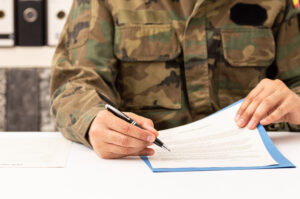How to Download Images on a Chromebook
Using a Chromebook for your everyday tasks comes with several advantages. It’s lightweight, accessible, and updates happen automatically. Among its many tasks, downloading images is straightforward once you know the steps. Unlike traditional laptops, Chromebooks rely heavily on Google’s ecosystem for their functions.
Using the Built-In Browser: Google Chrome
Chromebooks primarily use the Google Chrome browser. This is the most common method to download images.
- Open the Google Chrome browser on your Chromebook.
- Navigate to the website containing the image you want to download.
- Place the cursor over the desired image.
- Perform a two-finger tap on the trackpad. This action simulates a right-click on a traditional mouse.
- From the dropdown menu, select “Save image as…”
- The “Files” app interface will pop up. Choose the download folder or create a new one if needed. Then, click Save.
The image will save into the chosen location on your Chromebook, ready for offline use or future reference.
Using Touchscreen on a Chromebook
Some Chromebooks have touchscreen capabilities. This feature offers slight variations in the image download process.
- Tap on the Google Chrome browser icon to open it.
- Locate the image you wish to download on a website.
- Press and hold your finger on the image for a couple of seconds.
- A menu with several options will appear. Tap on “Save image as…”.
- Select the designated folder in the “Files” app and tap Save.
Using the touchscreen is intuitive and resembles actions on smartphones and tablets.
Finding and Managing Downloaded Images
Once downloaded, locating your images is essential for organization. Chromebooks store all images in the “Files” app by default.
- Open the “Files” app, indicated by a blue folder icon from your launcher or taskbar.
- Navigate through folders listed on the left pane. Typically, downloaded images land in the “Downloads” folder.
- You can organize, rename, or move images as desired. Drag-and-drop functionalities make this process smooth.
When you need to upload or share, using the “Files” app ensures everything is structured and reachable.
Downloading Images from Google Drive
Chromebooks seamlessly integrate with Google Drive. Sometimes, images are stored in your Drive, requiring another retrieval method.
- Launch Google Drive from the app menu or directly in the Chrome browser.
- Browse or search for the image you need.
- Once found, right-click on the image. For a touchscreen, tap and hold to access options.
- Select “Download” from the available choices.
- The “Files” app will open. Confirm the location or select another, then confirm with Save.
Google Drive helps maintain cloud access, ideal for teamwork or accessing from different devices.
Using Image Search Engines Efficiently
Image search engines such as Google Images offer infinite resources. Effective techniques convert browsing into downloading.
- Open Google Images by navigating to images.google.com.
- Enter keywords related to the image you wish to find.
- Once desired results appear, inspect the thumbnails.
- Click on an image to view it larger. This ensures you’re viewing the exact size and quality before downloading.
- Use the method mentioned earlier: two-finger tap or hold for options, then select “Save image as…”.
Remember to respect copyrights and use images in accordance with licenses or permissions granted.
Utilizing Browser Extensions or Apps
There are browser extensions and apps available to aid image downloads. Here’s how you can explore this option.
- Navigate to the Chrome Web Store. Use the search bar to find image downloading extensions.
- Some popular extensions include “Image Downloader” and “Fatkun Batch Download Image”.
- Click on the extension and review user ratings, descriptions, and permissions.
- To add an extension to Chrome, hit “Add to Chrome”. The browser will install it, visible next to your address bar.
- Once installed, follow the extension’s instructions for downloading images in bulk or with more nuance than manual methods.
These tools can save time, especially when handling multiple photos in one go.
Converting and Editing Images After Download
Post-download, sometimes images need conversion or minor edits. Chrome OS supports several applications for such tasks.
- Popular web-based editors include Pixlr, Canva, and Photopea.
- Open any of these sites, and upload the image from the Files app.
- Proceed with edits like cropping, resizing, or adjusting brightness and contrast.
- After modifications, export or save back to your Chromebook in the desired format.
These editors offer comprehensive tools without needing native software installations.
Handling File Formats and Compatibility
Be aware of different file formats when downloading. Images generally come in jpeg, png, or bmp formats.
- JPEG is common for its decent quality and smaller size, ideal for online sharing.
- PNG retains higher quality but results in larger file sizes. Beneficial for images needing transparency.
- BMP or TIFF images are less common, usually in older digital files. Consider conversion for easier use.
Ensure compatibility with your project needs to avoid troublesome inconveniences later.
Common Issues and Troubleshooting
Downloading images on a Chromebook is typically hassle-free, but issues might arise.
- If downloads fail, confirm an active Internet connection.
- Verify if a site prevents downloads through browser inspector tools. Press Ctrl + Shift + I to check site restrictions.
- In cases where images save but won’t open, review file format compatibility.
- Always keep your Chrome OS updated for seamless downloads and app function.
Patient troubleshooting can resolve most of these hurdles, ensuring smooth retrieval of images.







